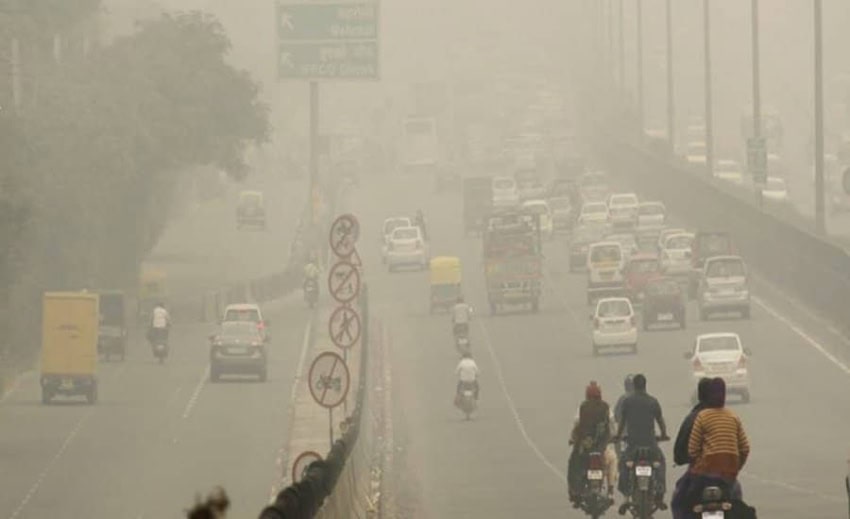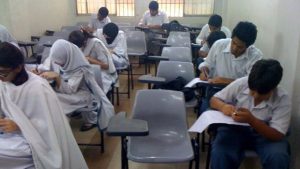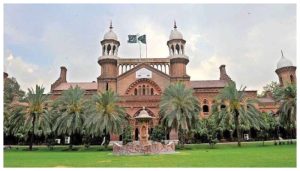LAHORE – Another spell of toxic smog has started gripping the heart of Pakistan – Lahore – amid unsuccessful efforts by provincial environment regulators in measuring the air quality index.
Each winter, from October to November, thick smog envelops Lahore and numerous cities across the dusty and densely populated Punjab plains.
Meanwhile, the international air quality monitoring agencies have listed Lahore among one of the most polluted cities in the world. A US Air Quality Index has stated Pakistan’s AQI had been reached up to 332 followed by Delhi’s 208. These statistics show that the Lahore’s air quality is much unhealthy as compared to the World Health Organization’s guidelines.
An AQI between O and 50 is said to be good, 51 and 100 satisfactory, 101 and 200 moderate, 201 and 300 poor, 301 and 400 very poor and 401 and 500 severe.

What causes smog?
With the drop in minimum temperature, increase in humidity level and lack of rain, the intensity of smog is expected to augment in the coming days. What adds to the smoggy conditions is the air pollution caused by industries, carbon emissions by vehicular traffic, crop burning and brick kilns.
On the other hand, the level of toxic elements like carbon monoxides (CO), oxides of sulfur, oxides of nitrate and particulate matters [PM2.5 and PM10] have reached far beyond Punjab Environmental Quality Standards (PEQS).
However, despite the creation of a Rs250 million Punjab Environment Fund to control smog earlier this year, the Environment Protection Authority (EPA) has failed to bring significant changes in the quality of Lahore’s environment.
At least eleven monitoring stations were supposed to become functional by the end of this month. “Though EPA has installed five air quality monitoring stations; two in Lahore, one at Met office, another at the Punjab Medical and Dental College (PMDC) and one each in Gujranwala, Faisalabad and Multan, the data produced is not reliable and that is why EPA is reluctant to disseminate it,” according to EPA officials.

Last year, the Punjab government had formulated a smog policy but it was not a concrete as experts were not supported by the competent authority or provided technical data.
EPA spokesperson Naseemur Rehman says the agency’s air quality monitoring stations are in the process of calibration. “Once calibrated, we will start sharing the air quality data,” he said.
Other factors contributing to smog in Lahore is stubble burning in Indian Punjab. To monitor trans-boundary pollution, the EPA says it plans to install an air quality monitoring station on the Pakistan-India border.
How smog affects health?
Smog containing the pollutants may cause eye/throat irritation, as well as difficulty in breathing and due to this, public may exercise precautionary measures. Long-term exposure to smog at low levels can affect eyes, skin and lungs elasticity and the ability to resist disease, effectively ageing lungs prematurely.
Children, the elderly, asthmatics, and sufferers of other chronic lungs diseases are more susceptible to smog effects than the general population.
According to WHO, exposure to toxic air both indoors and out kills some 600,000 children under the age of 15 each year. In 2016 alone, some 600,000 children died from acute lower respiratory infections caused by polluted air, a WHO report found.

Data from the UN health body shows that every day, 93% of children under the age of 15 — a full 1.8 billion youngsters, including 630 million under the age of five — breath dangerously polluted air.
According to WHO data, more than nine out of 10 people on the planet breath dangerously toxic air, causing some seven million premature deaths each year.
The WHO report found that children in poorer countries are far more at risk, with a full 98 percent of all children under five in low- and middle-income countries exposed to PM2.5 levels above WHO air quality guidelines. That compares to 52 percent in high-income countries, WHO said.
What to do?
Talking to Daily Pakistan on Tuesday, the principal Punjab University College of Earth and Environmental Sciences stressed the need to formulate sustainable policies to combat this unnatural phenomenon.
“Shutting down factories and brick kilns for just four months is not enough to clean the environment. It is a common practice of our officials to rush to making policies and implementing them only after the Supreme Court orders,” Prof Dr Sajid Rashid explained while urging the provincial authorities to take permanent steps to control air pollution.
“It is our social and moral responsibility to develop certain sustainable habits, and consider the consequences of our actions,” the academic added.
Prof Rashid also informed that his department is going to launch a new technology tool next year for brick kilns owners to control the release of smoke in the air.
However, the situation might improve after some rainfall, according to the Pakistan Meteorological Department (PMD). Weather experts have predicted light to moderate showers at isolated places in northern Punjab between November 1-2.
Punjab Chief Meteorologist Riaz Ahmad told Daily Pakistan that lack of rainfall over the past two months was the prime reason behind this smog situation, especially in the eastern and central areas of Punjab.
The top official expressed the hope that even light showers can bring down the intensity of smoggy conditions.
A new UN report suggests millions of lives could be saved and one billion people living in Asia could be breathing clean air by 2030 if 25 simple and cost-effective measures are implemented. Currently, about 4 billion people – 92 per cent of Asia and the Pacific’s population – are exposed to levels of air pollution that pose a significant risk to their health.
The report, Air Pollution in Asia and the Pacific: Science-based Solutions, is the first comprehensive scientific assessment of the air pollution outlook in Asia and the Pacific. It details 25 policy and technological measures that will deliver benefits across sectors.
According to the report, effectively implementing the 25 measures would result in a 20% reduction in carbon dioxide and a 45% reduction in methane emissions, preventing up to a third of a degree Celsius in global warming. Resulting reductions in ground-level ozone would reduce crop losses by 45% for maize, rice, soy and wheat combined.
Approximately 7 million people worldwide die prematurely each year from air pollution-related diseases, with about 4 million of these deaths occurring in Asia-Pacific.
When contacted, Naseemur Rehman, a senior official of EPD, said that the department has taken several measures to minimise effects of smog. He said none of the steps have failed and efforts of the department didn’t mean that smog will not build up over the city. He said the department is keenly watching the situation and will take appropriate measures.














